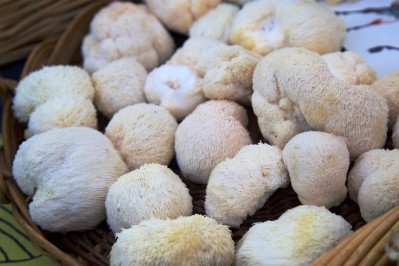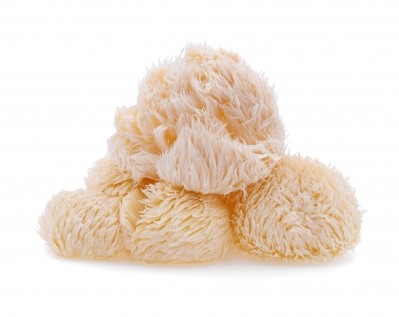Potential for mushroom polysaccharides in DM management

Indeed, formulas derived from natural ingredients for functional foods or nutraceuticals represent a convenient and effective method to manage non-transmissible chronic diseases, like DM, as an alternative to traditional therapies, scientists from Guangdong Ocean University, China wrote in Frontiers in Nutrition.
Mushroom polysaccharides are known to improve oxidative stress, beta-cell dysfunction and insulin resistance associated with DM, through antioxidant activity, they explained.
“Interdisciplinary studies focusing on mushrooms have documented much of the knowledge on mushroom polysaccharides and increasingly demonstrate valuably pharmaceutical properties of mushroom polysaccharides.”
However, this mechanistic activity could be enhanced when combined with other active substances like minerals and trace elements, they said.
“Mushroom polysaccharides combined with other active components aiming at synergistic effects would provide a potentially powerful approach to preventing and treating DM and its complications.”
Mushroom benefits
There is high and increasing global prevalence of DM, which is characterised by hyperglycaemia and implicated in the pathogenesis of other chronic diseases such as cardiovascular and Alzheimer’s disease, cancer, blindness, kidney failure, and amputations.
Pharmacological interventions can provoke both weight gain and hypoglycaemia while natural components and herbal medicine are considered safe and economical, the authors wrote.
Polysaccharides from plants, grains, fruit, vegetables, and edible mushrooms have a range of bioactivities (hypoglycaemia, hypolipidemic, antioxidant, anti-inflammatory, prebiotic effects) associated with anti-diabetes.
Mushrooms also contain high amounts of protein and carbohydrates, as well as potassium, magnesium, calcium, and sodium, and a range of vitamins (B-group, ascorbic acid and D2). As such, their activity in diabetes management has been proposed by researchers.
Polysaccharide action
Mushroom polysaccharides are known as a biological response modifier (BRM) (anticancer properties) and for immune-modulatory activity, the authors explained.
“A variety of immune cell receptors, including dectin-1, scavenger receptors, complement receptor, lactosylceramide, and toll-like receptors (TLRs), are proposed to be involved in mushroom polysaccharide-induced immune responses, including immune modulation, anticancer, and anti-inflammation.”
Scavenging activity against free radicals is demonstrated in in vitro studies, and further research shows mushroom polysaccharides enhances the activity of antioxidant enzymes in diabetes models, the authors said.
“Interestingly, numerous in vivo studies have shown that mushroom polysaccharides are capable of protecting the antioxidant activities of enzymes such as superoxide dismutase (SOD), catalase (CAT), and glutathione peroxidase (GSH-Px), which are major components of the defence system against ROS within body.”
Report highlights
The current review presents broad evidence to support the potential of polysaccharides in DM management, including anti-hyperlipidaemic and anti-inflammatory action.
“Progress in understanding the modulating insulin signalling pathway would provide a basis for developing targeted therapy for DM,” said the researchers.
The report highlights the benefit of treatment with Pleurotus ostreatus for modulating hypercholesterolemia, Trametes versicolour in reducing atherosclerosis, and Grifola frondosa for decreasing fasting blood glucose, oral glucose tolerance and hepatic levels.
“Mushroom polysaccharides might directly interact with insulin receptor or indirectly interplay with insulin signalling through NF-kB pathway and subsequently stimulate cascade signalling to promote glucose uptake of cells,” they commented.
However, they note that not all mushroom polysaccharides show consistent benefits. Cordyceps sinensis, for example, aggravated hyperlipidaemia in animals and increased liver weight and fat accumulation.
Furthermore, in vitro studies on scavenging activity do not present valid proof of antioxidant effects of polysaccharides and molecular mechanisms are still unclear. In addition, equivalent therapeutic activity varies and identifying the major anti-inflammatory pathway of polysaccharides remains a “great challenge” for researchers.
“The present state of knowledge on the structures of mushroom polysaccharides and their biological function of anti-diabetes is limited,” the authors added.
“Future studies assessing the efficacy of mushroom polysaccharides with precise structural characterisation in well-recognised models for the prevention and/or treatment of DM are needed.”
Source: Frontiers in Nutrition
Published online, December 14, 2022: doi: 10.3389/fnut.2022.1087826
‘Mushroom polysaccharides with potential in anti-diabetes: Biological mechanisms, extraction, and future perspectives: A review’
Authors: X. Liu, et al.















